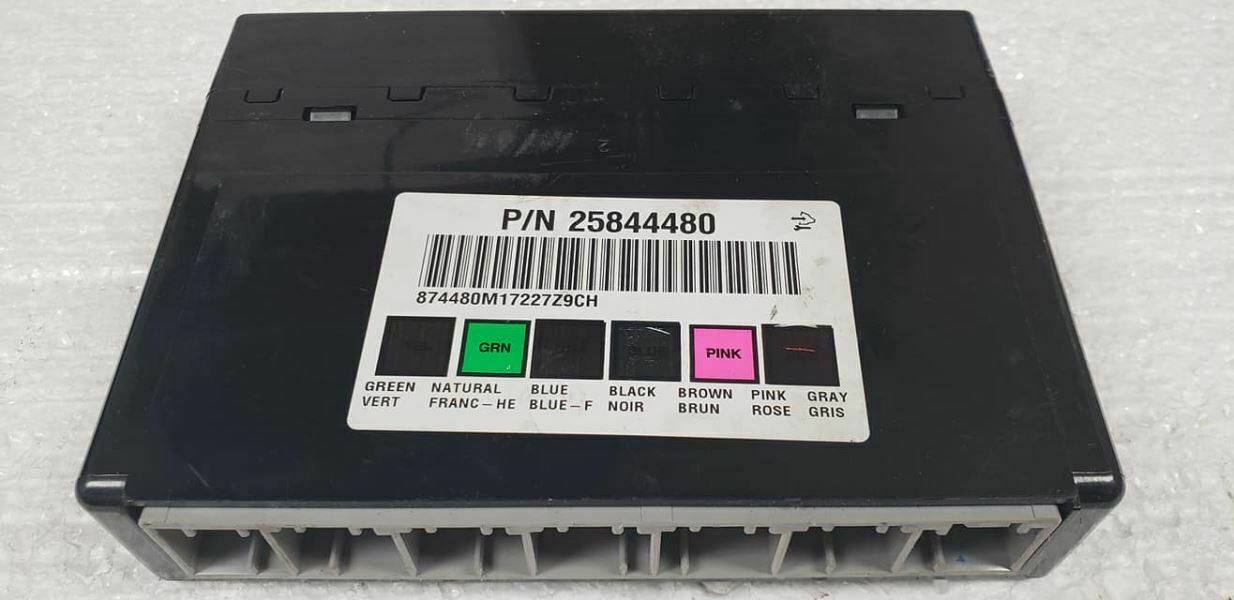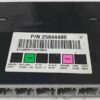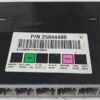Is Your Silverado Plagued by Electrical Gremlins?
Are you dealing with flickering lights, power windows with a mind of their own, or a dashboard that lights up with random warnings? These frustrating and often unpredictable issues are hallmark signs of a failing Body Control Module (BCM). The BCM is the central command center for your truck’s body electronics, and when it starts to malfunction, it can create a cascade of problems that are difficult to diagnose. Don’t let a faulty module compromise your vehicle’s functionality and safety. This genuine OEM-quality GM Body Control Module, interchangeable with part number 15284816, is the definitive solution to restore your truck’s electronic systems to perfect working order.
Diagnosing a Failing 2013 Silverado Body Control Module
A failing BCM doesn’t always result in a complete shutdown. More often, it presents as a series of intermittent and confusing symptoms. If you’re experiencing any of the following, your BCM is the likely culprit.
- ✔ Erratic Electronics: Power windows, door locks, or interior/exterior lights that work intermittently or not at all.
- ✔ HVAC Malfunctions: Your climate control may not respond, or the blower motor might run constantly or fail to turn on.
- ✔ Warning Lights: An airbag warning light, often accompanied by DTC B1001, is a common indicator of a BCM communication failure with the SDM (Sensing and Diagnostic Module).
- ✔ Security System Faults: The factory anti-theft system may act up, preventing the vehicle from starting or causing it to stall unexpectedly.
- ✔ Communication Breakdown: Multiple diagnostic trouble codes (DTCs) related to body systems, indicating a loss of communication between modules.
- ✔ Wiper and Washer Issues: Windshield wipers that won’t turn off, activate randomly, or don’t work when commanded.
The Plug-and-Play Solution: Pre-Programmed for Your Truck
Replacing a BCM used to mean a mandatory trip to the dealership for expensive programming. We eliminate that step. This module arrives at your door fully programmed to your vehicle’s specific Vehicle Identification Number (VIN). We load the latest GM software updates, ensuring complete compatibility and optimal performance right out of the box. This isn’t just a convenience—it’s essential for ensuring all vehicle systems communicate correctly from the moment of installation.
Installation and Post-Install Procedures
Installation is straightforward for anyone with basic mechanical skills. The BCM is typically located under the driver’s side dashboard, near the steering column. The process usually takes less than 15 minutes.
- Disconnect the Battery: Always disconnect the negative battery terminal before working on any electronic components.
- Locate and Remove the Old BCM: It’s usually held in place by a few clips or small bolts. Carefully disconnect the wiring harnesses.
- Install the New BCM: Connect the wiring harnesses to your new, pre-programmed module and secure it in place.
- Reconnect the Battery: Reattach the negative battery terminal.
Important Note on Airbag Systems: In some cases, after installation, the airbag warning light may illuminate. This is because the new BCM needs to be electronically ‘introduced’ to the vehicle’s airbag system. This requires a professional scan tool to perform the “Setup SDM Primary Key in BCM” procedure. Similarly, a “Brake Pedal Position Relearn” may be needed to ensure proper brake light and traction control function. These are simple procedures for any qualified technician.
Frequently Asked Questions
What exactly does the Body Control Module do?
The BCM acts as the central hub for your vehicle’s body electronics. It controls non-engine related functions like power windows, locks, lights, wipers, the security system, and HVAC controls, ensuring they all work together as intended.
Is this module truly plug-and-play?
Yes, it comes pre-programmed to your vehicle’s VIN. This means you can install it without needing a trip to the dealership for initial programming. However, as noted, some vehicles may require a simple relearn procedure for the airbag or brake pedal position sensor, which can be done with a high-level scan tool.
Why do BCMs fail?
BCM failure can be caused by several factors, including voltage spikes from jump-starting, water intrusion from a leak, excessive heat, or simply the age of the electronic components. Poor grounding is also a common external factor that can damage the module over time.
Do I need to return my old BCM?
No, there is no core charge for this part. You can keep your original module without any hassle or extra fees.
Will this fix my airbag light with code B1001?
A faulty BCM is a very common cause of DTC B1001. Replacing the module should resolve the root cause, but you will still need to perform the ‘Setup SDM Primary Key in BCM’ procedure with a scan tool to clear the light and sync the systems.
How do I confirm this fits my specific vehicle?
This module fits a wide range of 2007-2013 GM trucks and SUVs, including the Silverado, Sierra, Tahoe, and Escalade. It is a direct replacement for part numbers 25844480, 15284816, 25835966, 20939137, and others listed in the compatibility chart. Please verify your part number or contact us with your VIN to ensure a perfect match.


